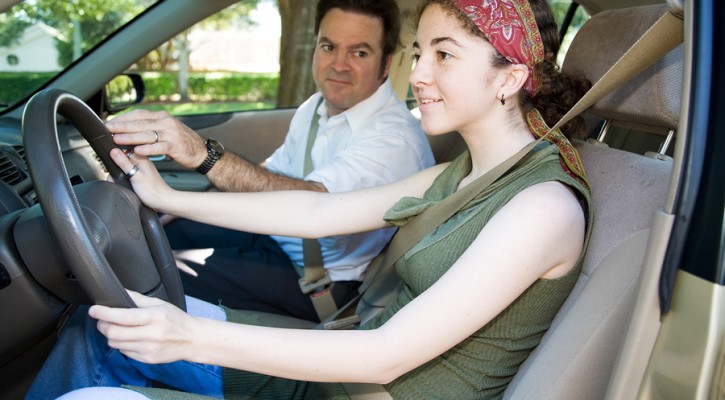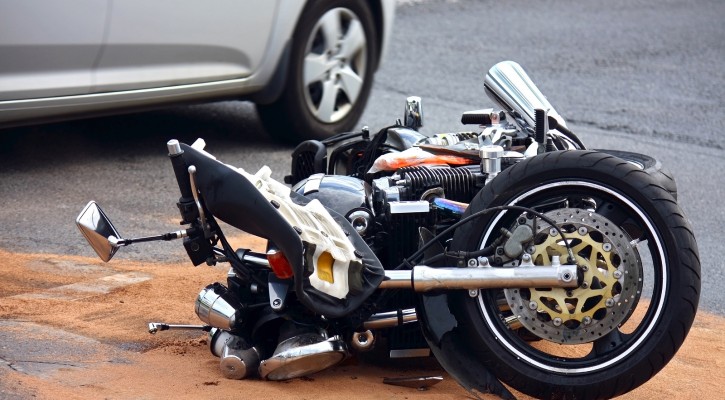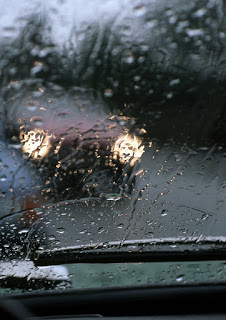Category Archive: Driving Skills

Support for Graduated Driver Licensing Laws
April 30, 2009
According to the National Highway Safety Administration (NHTSA), adolescent drivers, especially 16- to 17-year olds, are disproportionately involved in deadly motor vehicle crashes. Sixteen-year old drivers have crash rates that are about three times greater than 17-year-old drivers, five times greater than 18-year-old drivers, and approximately twice the rate of 85-year-old drivers. According to the NHTSA and the Insurance Institute for Highway Safety (IIHS), specific contributors to these higher crash rates include:
- Lack of driving experience and skills: Compared with crashes of older drivers, those of 16-year-olds more often involve driver error.
- A propensity towards risk taking behavior and poor decision-making.
- Driving at night: Per mile driven, the nighttime fatal crash rate for 16-year-old drivers is twice as high as during daytime hours.
- Distraction from teenage passengers: Fatal crashes involving 16-year-old drivers are more likely to take place when other teens are in the vehicle, and the risk increases with every additional passenger.
- Speeding: Sixteen-year old drivers have a higher rate of crashes in which excessive speed is a contributing factor.
Graduated Driver Licensing (GDL) programs help young drivers get driving experience progressively while minimizing risk, beginning with a restricted permit and eventually leading to full licensure.
Most programs include three stages:
- Learner Stage: Supervised driving, ending with a road test.
- Intermediate Stage: Limiting unsupervised driving in high-risk circumstances.
- Full Privilege Stage: A regular driver’s license.
Provisions of graduated licensing laws may include:
- Required hours of adult supervision during the learner stage.
- Restrictions on late-night driving.
- Restrictions on driving with teen passengers.
- Seat belt requirements for drivers and passengers.
- Restrictions on cellular phone use.
- Prohibiting the driver from moving up to the next level due to traffic violations.
GDL laws in most of the states that have them do not comply with all of the recommendations of the NHTSA; still, there has been an overall decrease in fatal crashes nationally since GDL laws began to be implemented. In 2006, 7,463 drivers who were 15 to 20 years old were involved in fatal crashes – an eight percent decrease from 8,074 involved in 1996. Individually, states with GDL laws also show improvement:
- California: A five percent decrease in crashes for 16- and 17-year-old drivers.
- Florida: A nine percent decrease in crashes for 16- and 17-year old drivers.
- Michigan: A 26% decrease in crashes for 16-year-old drivers.
- North Carolina: A 25% decrease in crashes for 16-year-old drivers.
- Oregon: A 29% decrease in crashes for 16-year-old drivers and a 16% decrease in crashes for 17-year-old drivers.
NHTSA research has also found that the most comprehensive GDL programs are associated with the greatest decrease in crash rates for teen drivers.
It is more difficult to evaluate the individual components of GDL laws because of the overlap of restrictions, but the NHTSA has conducted some research in this area. An analysis of the passenger restriction laws in California, Massachusetts, and Virginia indicated that there were 740, 173, and 454 fewer 16-year-old involved in crashes per year, respectively. A different study found that states with nighttime driving restrictions for teen drivers show decreases in crashes of up to 60% during the restricted hours.
Public support for GDL laws is also strong. In 2007, the NHTSA conducted the Motor Vehicle Occupant Safety Survey (MVOSS), a national telephone survey about driver safety. Seventy-nine percent of the participants said that teen drivers should proceed from a learner’s permit to a provisional license status rather than directly to an unrestricted adult license. The results of the survey also indicated strong support, ranging from 73% to 99%, for specific restrictions on provisional driver license status, such as:
- Requiring young drivers to wear a seat belt at all times.
- Prohibiting driving after 9pm, unless supervised by an adult.
- Limiting the number of teenage passengers allowed in the vehicle.
- Prohibiting the use of a cellular phone while driving.
- Requiring the new driver to hold the provisional license for at least one year without any traffic violations before receiving an unrestricted adult license.
GDL provisions are still in their infancy in many states, so evaluating the results of these programs is difficult. However, outcomes so far are promising. The enactment of and enforcement of these laws are important steps in efforts to save the lives of young drivers.
Tips for Teens: Handling Roadside Distractions on Spring Break
March 6, 2009
Spring break is an exciting annual event for many young people. They look forward to taking time off from the rigors of schoolwork to spend time with friends having fun in an exotic setting.
But this can also be a dangerous time for young people, especially when they drive to their destination, often accompanied by distractions such as passengers and loud music. Driving requires attention and awareness, along with the ability to make complex decisions and act on them quickly. For someone driving in an unfamiliar setting, this awareness is particularly important. Drivers in an unfamiliar setting can get distracted by:
- perplexing roads, signs, and signals
- getting lost or confused
- looking at maps or driving directions
- looking at the scenery
In this article, we will address the issue of how to handle roadside distractions when driving in an unfamiliar setting.“Roadside distractions” refers to any aspect of the environment that draws a motorist’s attention away from the task of driving. For example, a driver who is spending spring break in a beach town may face roadside distractions such as:
- Dart in and out of traffic
- Be over-excited or intoxicated
- Be skimpily dressed
- Include large groups of children
- Be carrying several items, such as beach towels and toys
Other drivers who:
- exceed the low speed limit
- run red lights and stop signs
- weave in and out of traffic
- play loud music
- call out from their vehicles
- Other road users who are riding motorcycles, mopeds, bicycles and skateboards
- Narrow roadways, closed roads, and detours
- Noise and bright lights from nearby hotels, restaurants, bars and amusement parksDrivers who are faced with this bewildering array of lights, sound and movement must continually refocus their attention on their driving. This is particularly important for inexperienced drivers whose control of the vehicle may be somewhat tenuous; a crash could occur very quickly. The following tips will help:
Minimize distractions inside the vehicle:
- Turn the stereo off
- Ask passengers to quiet down
- Don’t eat, drink or smoke
- Turn your cell phone off
- Ask a passenger to act as a navigator instead of looking at the map or directions yourself
- Drive at or below the posted speed limit
- Maintain an adequate following distance
- Use your turn signal
- Keep driving normally and turn around in a safe place if you miss your turn
Scan the road ahead and your mirrors for trouble:
- Watch the road ahead while taking quick glances further ahead and in your mirrors
- Don’t let yourself be distracted from scanning – while you’re staring at one thing, another hazard could develop outside of your range of vision
Ask yourself “What if…?”
- What if that pedestrian steps into the street?
- What if that bicyclist falls?
- What if that traffic light changes suddenly?
- What if that weaving driver is drunk?
Avoid careless, reckless, aggressive drivers and drivers who may be intoxicated:
- Keep a safe distance from these vehicles
- Avoid challenging these drivers with your vehicle, eye contact, or gestures
Remember, driving safely helps ensure a safe, relaxing spring break!

Sharing the Road with Motorcycles
February 19, 2009
Motorcycles are less stable and less visible than cars, and they have high performance capabilities. For these and other reasons, motorcycles are more likely than cars to be in crashes. And when motorcycles crash, their riders lack the protection of an enclosed vehicle, so they’re more likely to be injured or killed. Per mile traveled, the number of deaths on motorcycles is about 26 times the number in cars. A rider who isn’t wearing a helmet is 40 percent more likely to suffer a fatal head injury, compared with a helmeted rider.
The actions of motorcyclists can affect motor vehicle operators in numerous ways. When you follow a motorcycle, remember that motorcycles have the ability of stopping much more quickly than other vehicles in emergencies. Following too closely endangers your life and that of the motorcyclist.
In addition to maintaining a safe following distance from motorcyclists in front of you, check your rearview mirror and be aware of motorcyclists following you. When a motorcyclist is following you, be especially careful not to make any sudden stops.
Weather and road conditions present greater problems to the motorcyclist than to the driver of a motor vehicle. A puddle may hide a hole that jolts your car; the same hidden hole can throw a motorcycle out of control. When it rains, reduced traction makes it difficult for a motorcyclist to balance. It is more difficult for the motorcyclist to stay in control on slippery roads. Wet or icy roads impair a motorcyclist’s ability to brake and maneuver. Wind gusts can move a motorcycle across an entire lane. Gravel roads decrease traction and may cause a rider to slow down or brake where a car would not. Allow extra space for motorcycles in all adverse conditions. Use extra care when you are following a motorcyclist that is crossing railroad tracks. Railroad tracks present a special problem for motorcyclists, because motorcycle tires can get caught in the grooves of the crossing, causing the rider to lose her or his balance.
When you are following a motorcycle that is carrying a passenger, use extra caution. Passengers change the way the motorcyclist should operate. A motorcyclist who is inexperienced in transporting a passenger may have extra difficulties with balancing and controlling the motorcycle.
Learn more about motorcycle safety and sharing the road with motorcycles.

Environmental Effects on Driving a Car
January 29, 2009
We cannot avoid environmental conditions when we drive. Sometimes, conditions are favorable: a clear day with good visibility. Other times, challenging environmental conditions such as rain, fog and wind exist. Understanding how to properly handle these challenging conditions will make driving in them safer and less stressful.
Even a day filled with sunshine can present problems when driving. Too much light can make it difficult to see ahead. Wear sunglasses or use your sun visor. Always keep the lower edge of the sun visor pushed toward the windshield. Clean the inside of your windshield and all windows at least once per week. Sunshine on a dirty windshield creates glare.
Night driving requires adjustments too. The lack of light reduces detail and conceals hazards such as pedestrians, bicycles, stalled cars, and curves. It is more difficult to judge the speed and position of other vehicles. You must depend largely on your headlights, which will show only a relatively short and narrow path ahead. Headlights do not bend around corners; they will only illuminate what is directly in front of you. Highway lighting may be limited. Glare from roadway lights, business signs, and the headlights of oncoming vehicles may impair your visibility.
Other conditions that can greatly affect visibility are fog, haze, smoke and mist. Be especially careful of patches of fog in valleys and low-lying areas. It is best not to drive in fog or smoke. If you must, slow down, turn on your low beam headlights, and be ready for a fast stop. Be alert for slow-moving or stopped traffic. Check your rearview mirrors frequently for vehicles that are approaching quickly from the rear. Use windshield wipers in heavy fog. If the fog or smoke becomes so thick that you cannot see well enough to keep driving, pull off the road until conditions improve. Pull over as far to the right as possible, off the main travel portion of the roadway. Leave your parking lights on and activate your hazard lights.
During rainy conditions, wet roads will increase stopping distance. Roads are most slippery just after it begins to rain because the rain mixes with oil dropped from cars onto the road, creating a very slick surface.
When you are driving in the rain, slow down. Driving too fast in the rain makes hydroplaning more likely. When a car hydroplanes, the tires ride on a thin film of water instead of on the road. When this happens, you can easily lose control and skid. Your vehicle can hydroplane in as little as 1/16 of an inch of water. If the tread on your tires is worn, your vehicle is more likely to hydroplane. Besides slowing down, you can also reduce your chances of hydroplaning by making sure your tires have the right air pressure and good tread. If your vehicle hydroplanes, ease your foot off the gas and allow your vehicle to slow down until your tires gain traction with the road.

School Bus Safety Tips for Drivers and Children
January 28, 2009
For 23 million students nationwide, the school day begins and ends with a trip on a school bus. The greatest risk is not riding the bus, but approaching or leaving the bus.
According to the National Highway Traffic Safety Administration (NHTSA), since 1997, 152 school-age pedestrians (younger than 19) have died in school transportation-related crashes. One-half (50%) of all school-age pedestrians killed in school transportation-related crashes were between the ages of 5 and 7. More school-age pedestrians have been killed between the hours of 3 and 4 p.m. than any other time of day.
The NHTSA offers school bus safety tips for both drivers and children. You can use these safety tips to raise the awareness of the potential hazards with your children, as well as become a safe driver yourself.
Tips for Drivers
- Learn and obey the school bus laws in your state.
- Learn the “flashing signal light system” that school bus drivers use to alert motorists of pending actions:
–Yellow flashing lights indicate that the bus is preparing to stop to load or unload children. Motorists should slow down and prepare to stop their vehicles.
–Red flashing lights and extended stop arms indicate that the bus has stopped, and that children are getting on or off. Motorists must stop their cars and wait until the red lights stop flashing, the extended stop sign is withdrawn, and the bus begins moving before they can start driving again. - When driving in neighborhoods with school zones, watch out for young people who may be thinking about getting to school, but may not be thinking of getting there safely. Slow down.
- Watch for children playing and congregating near bus stops. Be alert. Children arriving late for the bus may dart into the street with out looking for traffic.
- When backing out of a driveway or leaving a garage, watch out for children walking or bicycling to school.
Tips for Children
- Arrive at the bus stop at least five minutes before the bus is scheduled to arrive.
- When the bus approaches, stand at least three giant steps (6 feet) away from the curb, and line up away from the street.
- Wait until the bus stops, the door opens, and the driver says that it’s okay before stepping onto the bus. Use the handrails to avoid falls.
- When exiting the bus, be careful that clothing with drawstrings and book bags with straps don’t get caught in the handrails or doors. Walk at least three giant steps away from the side of the bus.
- If you drop something near the bus, tell the bus driver. Never try to pick it up because the driver may not be able to see you.
- If you have to cross the street in front of the bus, walk on the sidewalk or along the side of the road to a point at least five giant steps (10 feet) ahead of the bus before you cross. Be sure that the bus driver can see you, and you can see the bus driver.
- Never walk behind the bus.
